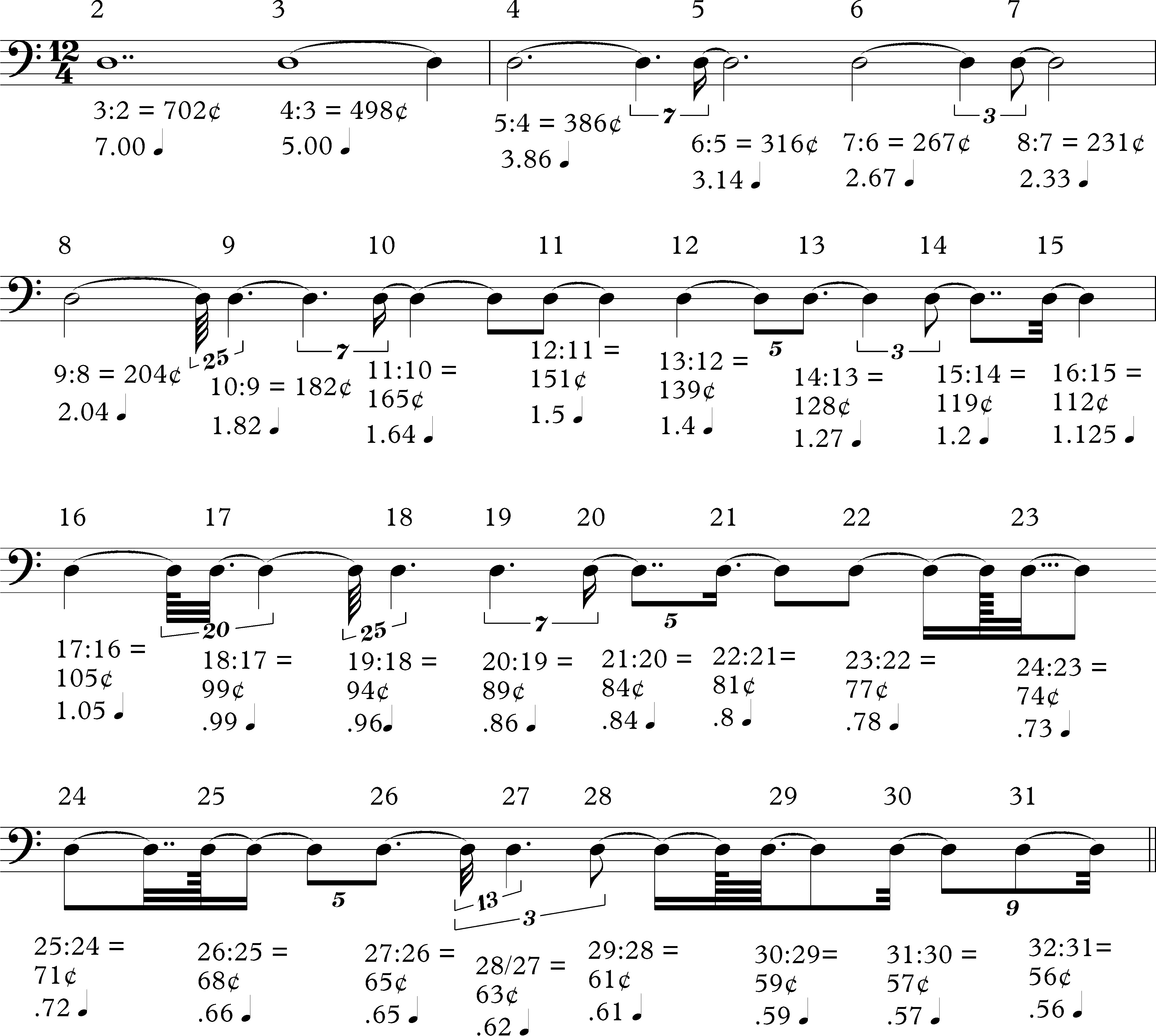I have always admired David Garland's song "Happy Ending," from the late 1980s, and I got the idea of basing a piece on its chord progression - as an homage to David and just because it's a neat chord progression. My first piece for normally-tuned Disklavier in fifteen year s, I made it a study on the Cowell/Nancarrow idea of accelerations and decelerations played against a steady pulse. Here the accelerations are sometimes logarithmic, sometimes exponential. Despite the stretching and compression of time, there are a few places in which, if you know David's song, you could sing along. The recording, made on my piano at school, is in Velotti temperament.
The logarithmic acceleration is achieved by deriving durations from progressively diminishing intervals in the harmonic series. I took a duration of twelve quarter-notes to stand for an octave, so each quarter-note beat would represent a half step. Since a 3:2 ratio is 702 cents, I turned that into seven beats, a double-dotted whole note. 4:3 = 498 cents, so I let five beats stand for that. Then 5:4 = 386 cents, and 3.86 quarter notes is represented by a dotted half tied to a dotted quarter within a 16th-note septuplet (6/7, or .86 of a quarter note). And so on, as shown in the chart below:

I got the idea from James Tenney's Spectral Canon for Conlon Nancarrow, in which, as per Robert Wannamaker's analysis, the durations within each line are isomorphic to the logarithmic scale of the harmonic series. Tenney notated the rhythms as dots on a player piano roll; I had to find a musical notation, which you'll notice gets very complex past the 24th harmonic. By the time you reach 64:63 and 65:64, you're dealing with intervals less than a cent different in size, and thus with less than 1/100th of a quarter note. My exponential rhythms were achieved more conventionally as multiples of a small unit, such as 16 32nd-notes, 15 32nd-notes, 14, 13, 12, and so on.
Kyle Gann
Return to Index of Compositions
